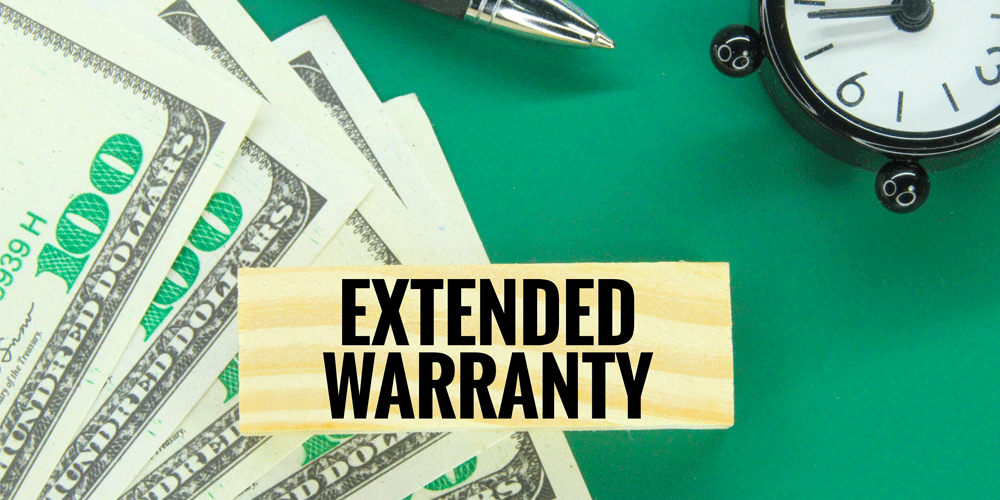Leasing New vs. Used Semi-Trucks: Pros and Cons You Need to Know
Robbie came to ATS with ten years of transportation experience under his belt. He has worked at ATS for the last seven years as a driver consultant. He prides himself on using his industry knowledge to assist drivers in making the best decisions for themselves.
New shiny semi-truck? Or old reliable?
Which option should you choose when you’re going to lease a truck?
When you're getting into your first leased truck, do you know which option to choose?
Making a decision without all the facts can lead to a lot of frustration and lost income Instead of finishing out the lease, you may decide to end it early, which can lead to financial penalties.
As a driver consultant here at Anderson Trucking Service (ATS) since 2015, drivers often ask me about the differences between leasing newer and older trucks. I’ve helped countless drivers navigate this decision.
To help you make that decision, I'll break down the factors you should consider, including leasing costs, maintenance considerations, warranties, and more.
- Leasing a newer semi-truck
- Leasing an older semi-truck
- Making your decision
- Finding the best trucking company to lease with
Pros and Cons of Leasing a New Semi-Truck
When it comes to leasing a new semi-truck, you get all the bells and whistles, but the upfront costs can be high.
Pros
- Lower Maintenance Costs: New semi-trucks are far less likely to encounter breakdowns, sparing you from frequent visits to the shop. With lower repair costs and minimal downtime, you can stay on the road longer and maintain a steady income. Drivers who prioritize reliability and reduced hassle may prefer this option, as it ensures more predictable expenses. No driver likes being in the shop constantly, and a newer truck will make excessive shop time less likely. Will your truck payments be higher? Certainly. It's a trade-off, so you have to decide what you'd rather spend your money on: truck payments or maintenance.
- Warranties: Newer trucks often come with comprehensive drivetrain or powertrain warranties, offering coverage for essential parts like the engine and transmission. Some leasing companies also offer short-term bumper-to-bumper warranties, adding extra peace of mind during the initial lease period. With these warranties in place, your out-of-pocket repair costs remain minimal.
- Higher Resale Value: When you complete your lease, a newer truck with lower mileage will retain its value longer and be better positioned for resale or trade-in opportunities. This provides a solid return on investment, especially for drivers aiming to maximize the truck's longevity.
- Predictable Maintenance Fund: Because of the truck’s newer condition, weekly maintenance account deductions are lower. For example, you may only set aside 10 cents per mile for repairs compared to higher rates for older trucks. This allows you to keep more of your earnings in hand.
Cons
- Higher Upfront Costs: Leasing a new truck often requires a larger down payment, which can be a financial hurdle for drivers just starting out. Even though some companies waive the down payment, this is less common with newer equipment.
- High Weekly Payments: While new trucks cost less in maintenance, the trade-off is higher weekly payments. These costs can strain your cash flow, especially if your revenue fluctuates with freight demand. You may decide to take the risk with an older truck and hope it doesn't have a lot of maintenance concerns.
- Expensive Balloon Payment: At the end of the lease, you’ll face a substantial balloon payment to secure ownership. If you’re not prepared to cover this amount or finance it through a bank, the cost may be a barrier to keeping the truck.

Pros and Cons of Leasing a Used Semi-Truck
Pros
- Lower Upfront Costs: Older trucks typically require minimal or no down payment, making them a viable option for drivers with limited savings. This is ideal for operators looking to get on the road quickly without a large initial financial commitment.
- Smaller Weekly Payments: Leasing older trucks allows for significantly lower weekly payments, freeing up cash for other operational expenses or personal savings. These lower costs can make leasing manageable even during slower freight seasons.
- Lower Balloon Payment: At lease-end, older trucks generally have a lower remaining balance, or balloon payment, making ownership more attainable. Drivers can more easily justify the expense based on the truck's value at that stage.
Cons
- Higher Maintenance Costs: Older trucks require more frequent repairs, increasing the amount funneled into your maintenance account. For instance, drivers might need to set aside up to 18 cents per mile to cover repair expenses. Unexpected breakdowns can also lead to costly downtime, eating into your profits.
- Limited Warranty Coverage: Older trucks are often outside their warranty period, leaving you responsible for major repairs like engine rebuilds or turbo replacements. While extended warranties can be purchased, they add to your leasing costs and require careful vetting to avoid scams.
- Lower Resale Value: After years of use, older trucks depreciate faster, especially as they approach a million miles. At this point, a major overhaul is often necessary, costing tens of thousands of dollars. This can significantly diminish the truck’s value as an asset.
How Do I Choose Between a Newer or Older Semi-Truck?
Ultimately, the pros and cons of leasing a newer versus an older truck balance out. Your choice comes down to your preference.
Are you the driver who wants to roll up to the truck stop in a brand-new rig? Or do you prefer a trusty steed?
If you get a newer truck, you’ll likely have fewer breakdowns, which leads to less downtime and the potential for more money in your pocket You may also prefer the safety features on newer trucks, like collision mitigation. When the lease ends, if you decide to purchase the truck, you’ll have a higher balloon payment to make. You'll spend most of your money on truck payments and the balloon payment to own the truck.
If you lease an older used truck, you’ll be saving money on a truck payment every week. Insurance costs may be lower as well. Most of your money both in the short-term and long-term will likely be spent on maintenance costs.
Would you rather spend your money on a truck payment or maintenance?
You must also consider the company you plan on leasing with. What kind of equipment do they have to offer? You may find a trucking company that has a great lease program, but they don’t have the equipment you want. Vice versa, you may find a leasing company with the newest equipment but not a great program.
The company you plan to lease with should weigh heavily in your decision between leasing newer or older equipment; make sure that they not only offer the equipment you want but that they’re also a good company.
Lease With the Best Company
Leasing a newer truck versus an older truck ultimately comes down to your preference.
Remember, before you sign any lease, you should read the terms of the contract closely. Know what you’re signing and make an informed decision. Talk to your driver recruiter and the leasing company to have a strong understanding of what you can expect from the lease contract and program.
After all, the leasing company’s reputation and equipment offerings should weigh heavily in your decision.
At ATS, we understand that it’s not only difficult to decide whether you should lease a newer or older truck, but it can be difficult to decide which company is the best one to sign a lease with.
That’s why we’ve put together a list of the best trucking companies to lease with. This list will help you make an informed decision about which company best aligns with your goals and expectations for a truck lease.


